The brief was for an amenity pavilion for the office tenants of the Featherstone Building, London, within a new biodiverse rooftop garden
Designed by Morris & Company, for Derwent London, The Featherstone Building is an 11-storey, brick-faced office building with a mixture of tenancies.
An opportunity arose to utilise an existing rooftop plant enclosure to create a new amenity space. The ambition was to adapt as much of the existing structure as possible and specify additional materials that would have minimal embodied carbon.
The design team hope that the project will act as an examplar for adaptive, low carbon, biophilic design that also provides a communal amenity experience for the building’s occupants.
The landscaped garden is planted with a range of flowers, herbs and multi-stem planting, creating not only a space of respite but also a rich area of biodiversity that attracts wildlife.
The pavilion is formed of a perimeter of existing steel beams and columns which support a new roof constructed from solid timber beams and joists – with glazed timber-framed bi-fold doors beneath. The bi-fold doors open up fully on three elevations to bring the outside in.
The third solid elevation consists of the existing sinusoidal plant screen enclosure and a new studwork wall to frame a small bar and a back-of-house area to service the space.
The interior is characterised by red natural clay tiles and the centre of the pavilion is framed by a large rooflight, providing a flexible space with good levels of natural daylight.
Project details
Architect Morris+Company
Client Derwent London
Joinery Stanbrook & Nicholson
Tiled floor Ketley quarry tiles in brown brindle
Internal wall linings Birch plywood
External metal cladding re-purposed sinusoidal aluminium cladding
Internal lighting The Running Magnet
Curtains de Le Cuona, Atelier Calico
Planters Willerby Landscapes
Primary structure re-purposed galvanised steel I beam/columns
Roof structure C24 softwood timber beams and joists



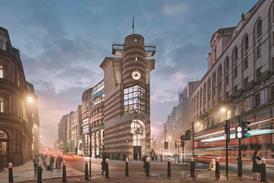





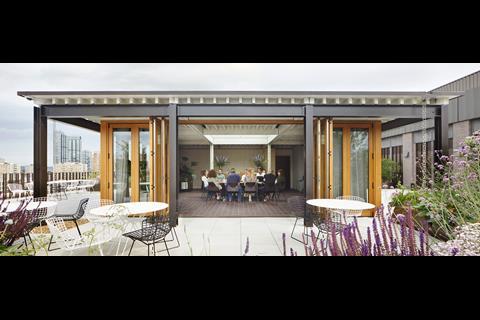
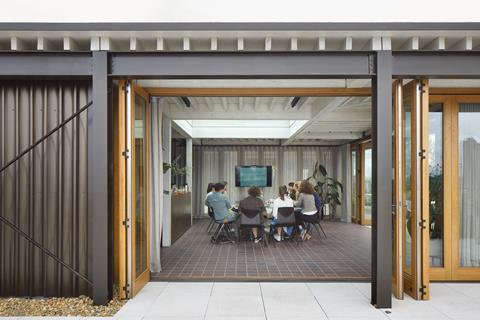
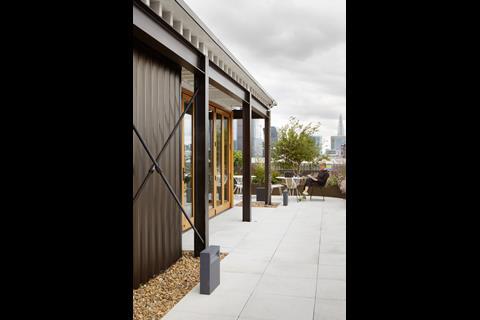
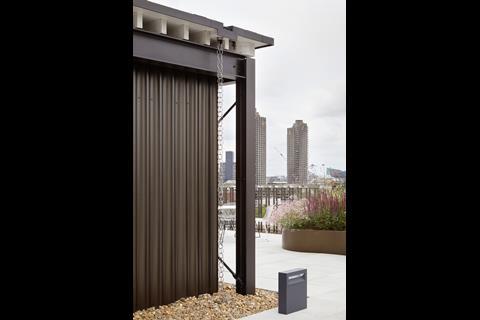

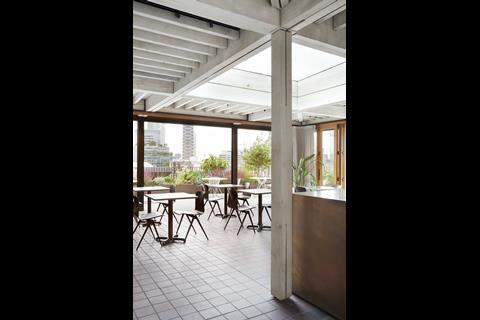
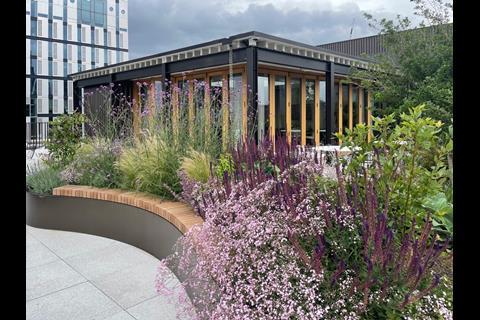
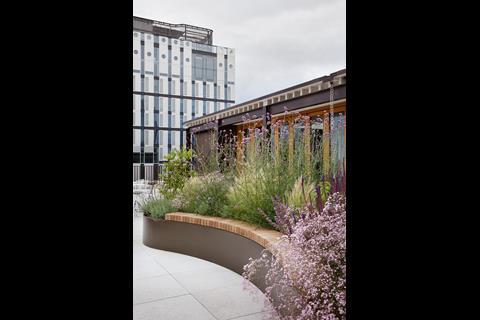
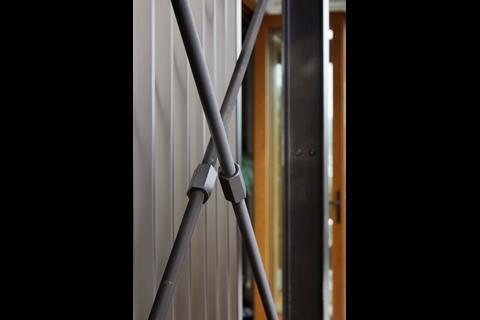

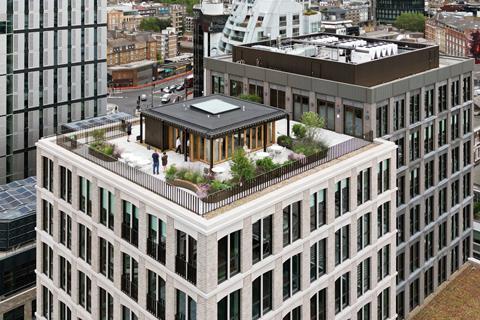
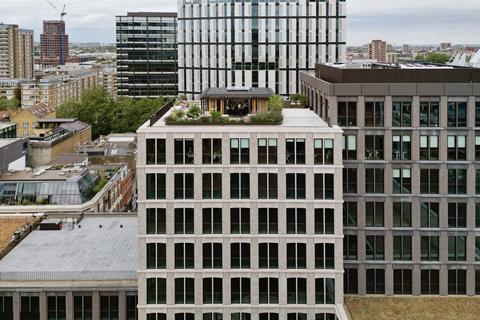








No comments yet